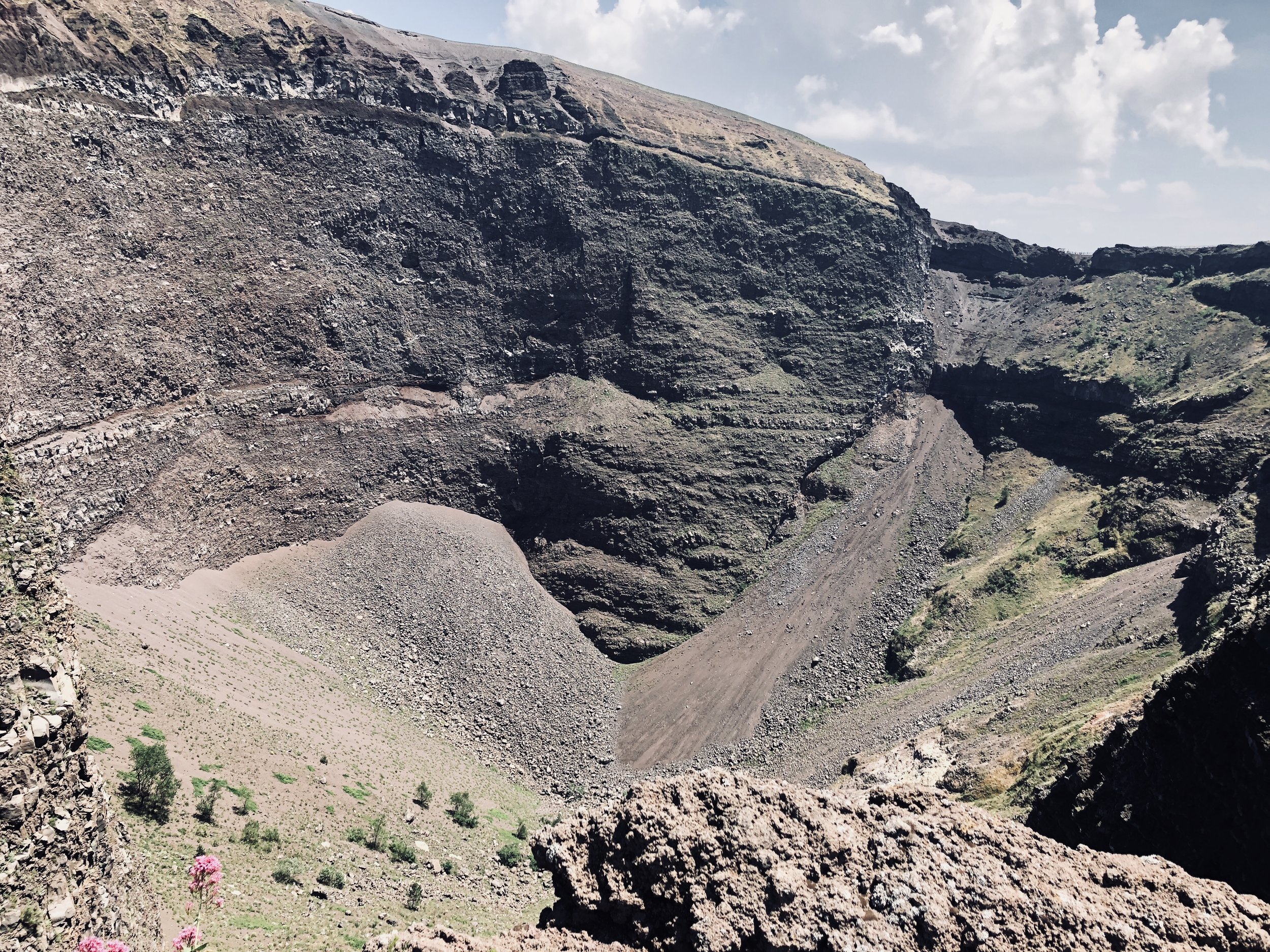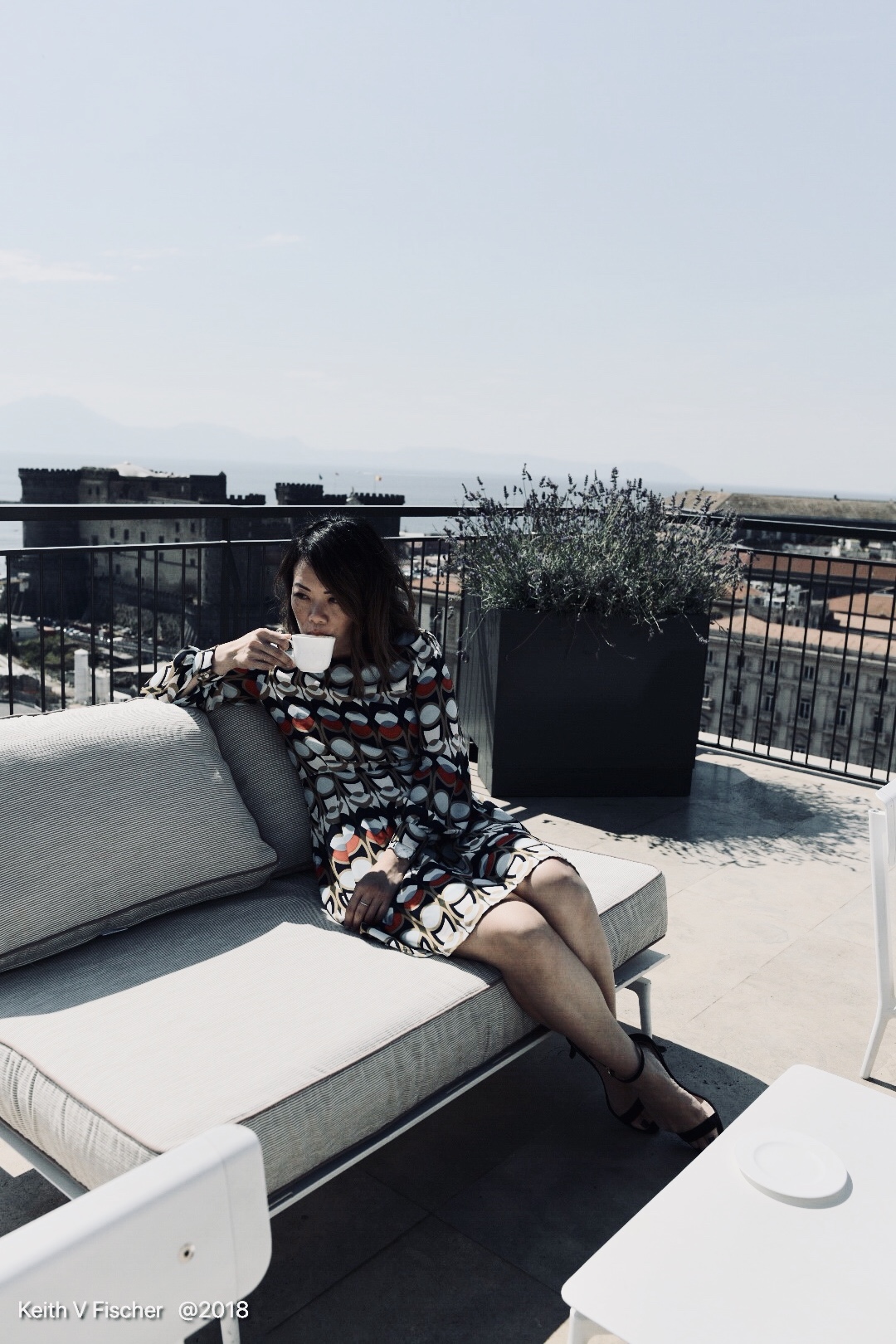Viva Italia: Napoli

2018 was definitely the year of Italy. An absolute dream of two weeks where Keith and I got to bask in the Italian sun, sip the strongest cappuccinos and indulge in pasta every single day. No apologies. If there was any time to live life to the fullest, it would be in Italy.
Everything tastes better, smells more fragrant, and buildings and landscapes are a feast for the eyes. And although the French may have coined the phrase ‘Joie de Vivre,’ I do believe the Italians perfected it.
So here’s to the first of a series of visual essays and impressions of the cities, towns and islands that Keith and I visited during our two weeks in this glorious country.
NAPOLI
First up, is Naples (or Napoli, in Italiano). The original idea for our trip was just to focus on the Amalfi Coast and bypass Naples altogether. I had heard from friends who visited - as well as reading on a number of websites - that Naples was a dirty, noisy and crime-ridden city that is often considered unsafe for tourists.
I’m glad that I dug deeper to find other perspectives about the city. Because I learned - and discovered while there - that while Naples is indeed the scrappier, independent coastal town compared to Rome - it has an abundance of character.
Driving from the airport - yes, we drove this trip in a VW Golf (standard transmission, as one does in Europe) - through to the centre of town, required passing some pretty sketchy areas. But much of those concerns are lost on you while you’re focused on navigating roads (through your phone’s GPS), avoiding pedestrians, other vehicles including numerous motor bikes, all the while learning to get used to your new car. Every time I drove (which was 100% of the time - Keith never drove!) it felt exhilarating. I can say with confidence that if you can drive in Naples, you can drive anywhere. Including Rome.
Our hotel in Naples - the Renaissance Naples Hotel Mediterraneo - was clean, modern and central. It was a short one-block walk to Via Toledo, a charming road full of pedestrians and shops. Walking down Via Toledo, you come across one of the most beautiful indoor shopping arcades I’ve ever seen: the Galleria Umberto I, a gallery covered in glass and iron, built in the late 19th century that houses a number of cafés and shops. I stumbled upon it when the rain came down and I ran in there for cover. Because there was scaffolding outside of the building, you couldn’t really tell what was inside unless you stepped in. If you’re ever in Napoli, it’s definitely worth a look. And to be honest, it’s less about the shops than it is about the structure of the building and the swaths of natural light that lift you up.
We were in Naples for three nights and spent time exploring part of the scenic waterfront in the Santa Lucia neighbourhood. This beautiful area was somewhere we just stumbled upon while wandering through the city. The famous Castel dell’Ovo (‘The Egg Castle’) is situated on the former island of Megaride, now a peninsula, on the Gulf of Naples. It sits just south of the Santa Lucia neighbourhood and you can get to it by walking along the boardwalk and taking in the beautiful scenery. The roof of the Castel dell’Ovo boasts incredible views of the southern end of Napoli, with the water right at its doorstep.
When you exit the Castel dell’Ovo, you come upon the marina, which is a great place to stop for a long, leisurely lunch. Enjoy an aperol spritz while you observe the busy comings and goings of fishermen. I was able to witness a boat coming back in with several dozen crates of fresh mussels from the morning’s catch. And I was thrilled being able to enjoy a plate of those mussels only a half hour later! There really is nothing like eating fresh seafood in Napoli accompanied by fresh baked bread to soak up the wonderfully fragrant broth.
You must also visit the Castel Nuovo - a medieval castle built in the 1200s and located in the Spanish Quarter just north of Santa Lucia. It serves as a museum filled with artwork (some of it is quite exquisite) and it also hosts a number of exhibitions and cultural events. Make sure you also check out the archeological dig that you can observe in the main hall through the translucent floor. It’s a fascinating peek at what life was like over a thousand years ago!
Napoli is also a relatively short drive away from Mt. Vesuvius and Pompeii. Given our time constraints, we decided to visit Mt. Vesuvius for this trip. The drive itself was uneventful until you got a bit closer to the base of Mt. Vesuvius and then the roads become incredibly windy and narrow. And the climb up Vesuvius involved a number of switchbacks that had blind corners so you had to honk as you drove around the corner to alert oncoming traffic. At one point, we even got stuck behind a bunch of cars because two full-size coach buses were trying to cross paths and the road was so narrow that they got stuck. They were wedged against each other and to get out, they had to rock back and forth. After about 30 mins, they managed to un-wedge and we were back on our way.
Once you get to Mt. Vesuvius, you park, hop on a transfer bus to the base (it’s super cheap, both ways) and then do the hike up to the summit. It’s a fairly easy hike as long as you bring good shoes. The views of Napoli and the surrounding region is absolutely breathtaking, especially as you get up to the summit. Just a funny anecdote - once you get to the top, there’s a little shop that sells wine and other trinkets. Leave it to the Italians to truly know how to celebrate - even if it’s reaching the summit of a volcano!
After three days, it felt like we got a flavour of Napoli - and would love to return to see more. It’s a great location to begin peeling back the layers of what a more gritty Italian city looks like. So different than Rome, the region of Tuscany and Venice - all parts of Italy that I’d visited in previous years. At the very least, it has inspired me to see beyond what I already know.





















